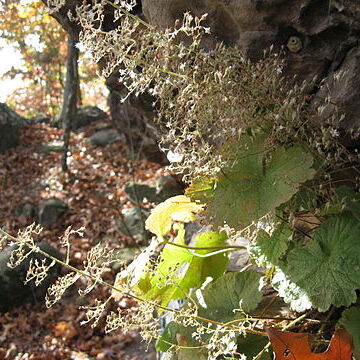Herbs acaulescent; caudex branched or unbranched. Flowering stems 9-45 cm, short to long stipitate-glandular, viscid. Leaves: petiole usually long stipitate-glandular, some-times short stipitate-glandular; blade (often purple abaxially), reniform to orbiculate, shallowly 5-7-lobed, 3-13 cm, base cordate, lobes rounded, margins crenate, apex obtuse, surfaces short or long stipitate-glandular abaxially, short stipitate-glandular adaxially, viscid. Inflorescences diffuse. Flowers: hypanthium radially symmetric, free to 0.3 mm, white or pink, obconic, 1.2-3.2 mm, short or moderately long stipitate-glandular; sepals erect, green-tipped, equal, 0.5-1.3 mm, apex rounded; petals reflexed, white or pink, narrowly oblanceolate, unlobed, 1.5-3.5 mm, margins entire; stamens exserted 1.2-3.2 mm; styles exserted 1-3 mm, 1.5-4 mm, to 0.1 mm diam. Capsules ovoid, 2-5.7 mm, (minutely stipitate-glandular or glabrous), beaks divergent, not papillose. Seeds dark brown, ovoid, 0.4-0.6 mm, smooth.

